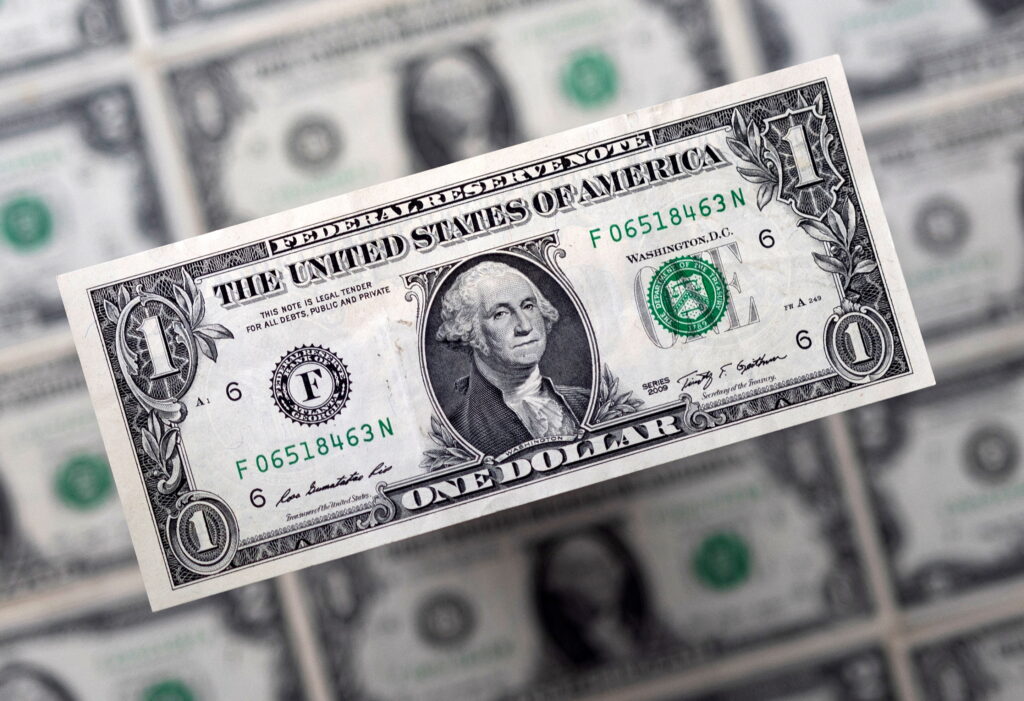
In the dynamic world of global finance, the American Dollar is making headlines once again as it extends its recovery for the second consecutive session, pulling itself up from the depths of a two-month low. This resurgence is not only catching the attention of traders but is also setting the stage for a closer examination of the factors propelling this upward swing.
The Dollar Index: A Closer Look
The American Dollar index, a key indicator of the currency’s overall value, has experienced a notable rise, reaching 104.55 with a brief dip to 104.30. This follows a 0.3% increase on Wednesday, marking the first profit in four days after teetering on the edge of a two-month trough at 103.98. A crucial element contributing to this positive shift is the rebound in US treasury yields, particularly fueled by robust data on US retail sales.
Factors Driving the Dollar’s Rise
The American Dollar resurgence is not a solitary event but a result of multiple intertwined factors. The impressive performance of US retail sales has injected renewed vigor into the Dollar, reflecting positively in the treasury yields. The connection between these yields and the Dollar’s value is a crucial dynamic in understanding the current market landscape.
Limitations to Dollar Gains
While the Dollar is on a path to recovery, it’s not without its hurdles. Lingering uncertainties in the market and a cautious approach from traders are tempering the gains. The anticipation of crucial US data, particularly on unemployment claims and industrial output, is contributing to the restrained optimism.
Odds of US Interest Rate Hike
One of the pivotal aspects influencing the Dollar’s trajectory is the probability of a US interest rate hike. Currently standing at just 2.5% for December, the potential impact of such a move on the Dollar is a matter of keen observation. The delicate balance of factors affecting this likelihood adds an element of suspense to the market dynamics.
US Unemployment Claims and Industrial Output Forecast
As the market eagerly awaits the release of data, projections for US unemployment claims are expected to rise slightly to 221 thousand in the week ending November 11, compared to 217 thousand last week. Simultaneously, industrial output is anticipated to decline by 0.4% in October. These figures carry weight in shaping market sentiments and influencing the Dollar’s performance.
The Market’s Awaited Response
Traders are poised on the edge, expecting crucial insights from the upcoming US data. The speculations on the Dollar’s future trajectory are rife, and the market is bracing for potential shifts in policies based on the revealed economic landscape. The impact on various sectors remains uncertain, adding an element of intrigue to the unfolding scenario.
Conclusion: Navigating Through Uncertainties
In conclusion, the American Dollar extended recovery ahead of significant US economic data unveils a complex interplay of factors shaping the current financial landscape. While optimism is palpable, uncertainties persist, and the market is navigating through a delicate balance of potential gains and limitations. As we await the unveiling of key data, the Dollar’s journey remains a focal point of interest in the global financial arena.
FAQs
1. What factors are driving the Dollar’s recent surge? The Dollar’s surge is propelle by a rebound in US treasury yields, coupled with robust US retail sales data.
2. Why are traders cautious despite the Dollar’s recovery? Traders remain cautious due to lingering uncertainties in the market and the upcoming release of crucial US economic data.
3. How likely is a US interest rate hike in December? The odds stand at just 2.5%, adding an element of suspense to the market dynamics.
4. What impact do US unemployment claims have on the Dollar? Rising unemployment claims may exert pressure on the Dollar, affecting market sentiments.
5. How is industrial output influencing the Dollar’s performance? Anticipated decline in US industrial output in October is a factor being closely watched, with potential implications for the Dollar.
